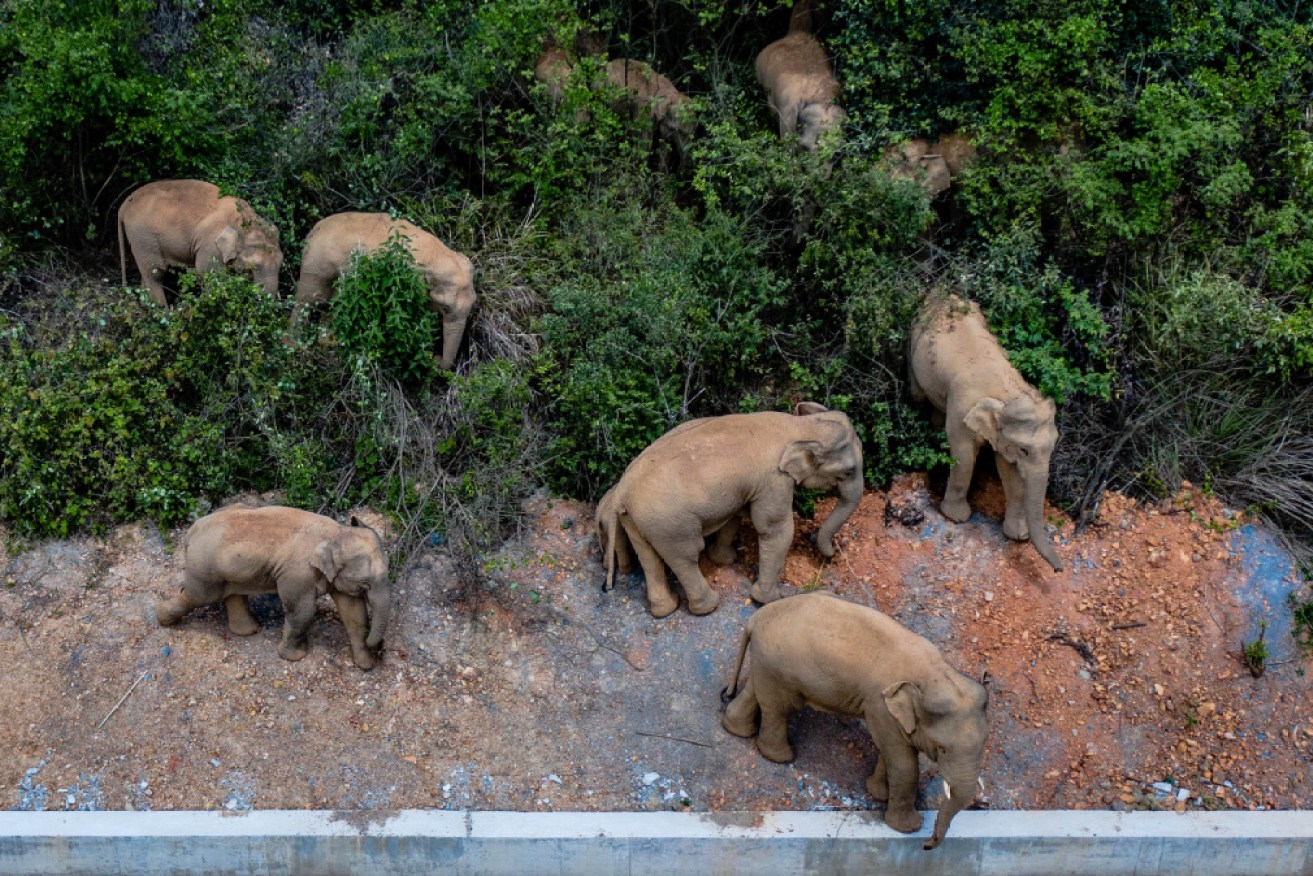‘Lost, drunk, hungry’ elephant herd rampages across China

Local media says the herd has caused more than 400 incidents and more than $1 million in damage. Photo: Getty
For more than a month, 15 elephants – including three calves – have dominated China’s domestic media as they march through towns and villages with no clear destination in sight.
Asian elephants are native to the south-western province of Yunnan, but one herd has migrated unusually far northward this year, leaving a trail of destruction as it marched through farms and villages.
Surveillance cameras in villages have caught the herd strolling down roads, feasting on trees and even – if local media is to be believed – rummaging through an alcohol factory.
The plight of the herd has caused great concern among China’s online community, with live streams closely following the elephants’ progress and drones monitoring from above.
It has also caused considerable angst among farmers, with local media reports suggesting the herd has so far caused more than $US1 million ($1.29 million) in damage to agricultural land.
Fuelling the intense interest in their plight is the mystery of why they embarked on the road trip in the first place.
“It’s hard to tell the exact reason for this specific herd’s migration, but if talking about the bigger picture, the biggest challenge for Asian elephants in Yunnan is habitat loss,” said Pan Wenjing, the Forest and Ocean Project Manager for Greenpeace.
Lost, ‘drunk’ and hungry?
Some media reports have suggested the female elephant leading the herd may have become lost and inadvertently led them on the long cross-country journey.
The elephants usually live in the biggest tropical forest in China, the Xishuangbanna reserve that borders Laos and Myanmar.
Conservationists estimate that 270 of the 300 Asian elephants in Yunnan live in the nature reserve, which is also a major tourist attraction.
This particular herd began a northward migration more than a year ago and then settled in a new area, before heading even further north in 2021.
They have covered more than 400 kilometres so far.
Tweet from @CHEN_Cheng_
One media report claims the herd originally had 17 elephants but two of them became “drunk” and dropped off the pace, returning to their original habitat.
The “drunk” theory appeared to be based on an article from state media that said the herd was seen in the vicinity of an alcohol factory.
“If elephants are found to be drinking alcohol, it’s likely because it has a similar smell to rotting fruit,” Zhang Jinshuo, an animal expert from the Chinese Academy of Social Sciences, was quoted as saying in the China Youth Daily.
At one point the herd marched through a town just 50 kilometres from the provincial capital Kunming – home to 6 million people.
China’s state news agency Xinhua said “precautionary measures” are being used to avoid elephant-human conflict.
This is not the first time elephants have strayed into residential parts of China.
More than a dozen people in Yunnan were killed by elephants in 2019, media outlet Caixin reported.

A drone is readied to track the migrating elephants. Photo: Getty
How do you guide 15 elephants home?
With the herd still showing no sign of returning south, officials in villages along the way have parked trucks across roads to try to guide the elephants’ direction.
They are using food bait in an attempt to lure the elephants back towards their home.
“Corn, sugar cane and other agricultural products attract Asian elephants,” said Li Zhongyuan from the animal protection station of Xishuangbanna forestry bureau.
While the sight of elephants rampaging through towns and villages looks worrying, Mr Li claims the situation for Asian elephants in China is actually improving.
“The number of elephants has increased from 170 in the 1980s to 300 now,” he told local media.
Pan Wenjing from Greenpeace said that is because poaching has been banned.
But the increase in elephants has coincided with a worsening environmental situation for them as rubber farms, tea plantations and urban areas have expanded.
“Between 1975 and 2014, in the areas where elephants are distributed, the natural forest has decreased by 16 per cent because of economic development and population increase,” she said.
“The increasing population and decreasing habitat drive the elephants to walk further to find somewhere more suitable.”








